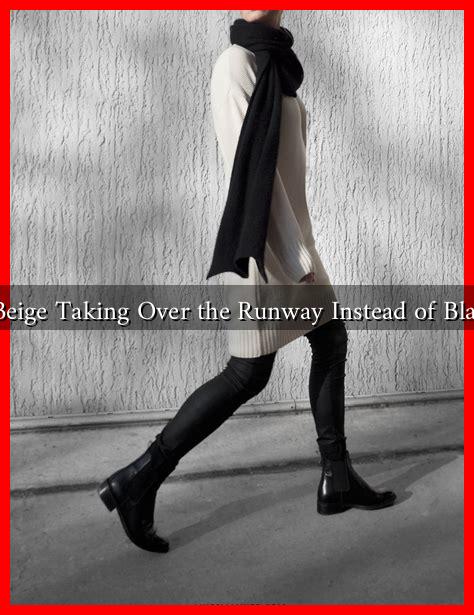-
Table of Contents
Is Beige Taking Over the Runway Instead of Black?
Fashion is an ever-evolving landscape, where colors, textures, and styles ebb and flow with the seasons. In recent years, a notable shift has emerged on the runways: beige is making a significant comeback, challenging the long-standing dominance of black. This article explores the reasons behind this trend, its implications for the fashion industry, and what it means for consumers.
The Rise of Beige: A Historical Perspective
Beige, often considered a neutral and understated color, has had its moments in fashion history. However, it has typically played a supporting role to the more dramatic and bold hues like black. Historically, black has been synonymous with elegance, sophistication, and rebellion. Yet, as societal norms shift and the demand for inclusivity and versatility grows, beige is stepping into the spotlight.
Why Beige is Gaining Popularity
Several factors contribute to the resurgence of beige on the runway:
- Versatility: Beige is a chameleon color that pairs well with almost anything. Designers are embracing its adaptability, allowing for a wide range of combinations that can suit various occasions.
- Minimalism: The minimalist trend has gained traction in recent years, with many consumers gravitating towards simpler, more understated looks. Beige embodies this ethos, offering a clean and sophisticated aesthetic.
- Inclusivity: As fashion becomes more inclusive, beige serves as a neutral base that complements a diverse range of skin tones, making it a more accessible choice for many.
- Comfort and Coziness: The global pandemic has shifted consumer priorities towards comfort. Beige, often associated with warmth and coziness, aligns perfectly with this new focus.
Runway Examples: Beige in Action
Several high-profile designers have embraced beige in their recent collections, showcasing its versatility and appeal:
- Chloé: The brand’s latest collection featured a range of beige tones, from soft pastels to rich caramel, highlighting the color’s adaptability.
- Hermès: Known for its luxurious fabrics, Hermès showcased elegant beige ensembles that exuded sophistication and timelessness.
- Balenciaga: The avant-garde label incorporated beige into its streetwear-inspired designs, proving that the color can be both edgy and chic.
These examples illustrate how beige is not just a passing trend but a color that can be reinterpreted across various styles and aesthetics.
Consumer Preferences: A Shift in Buying Behavior
According to a recent survey by the Fashion Institute of Technology, 65% of consumers reported a preference for neutral colors in their wardrobes, with beige leading the pack. This shift indicates a broader change in consumer behavior, where practicality and versatility are prioritized over bold statements.
Moreover, the rise of social media platforms like Instagram and TikTok has influenced fashion trends significantly. Influencers and fashion enthusiasts are showcasing beige outfits, further solidifying its place in contemporary fashion. The hashtag #BeigeFashion has garnered millions of views, demonstrating the color’s growing popularity among younger audiences.
The Future of Fashion: What Lies Ahead?
As we look to the future, it is clear that beige is not merely a trend but a reflection of changing consumer values. The fashion industry is increasingly focused on sustainability, and beige, often associated with natural materials and earthy tones, aligns well with this ethos.
Additionally, as brands continue to embrace inclusivity and diversity, beige’s ability to complement various skin tones will likely keep it relevant in the years to come. The color’s versatility means it can be adapted to fit various styles, from casual wear to high fashion.
Conclusion: Embracing the Beige Revolution
In conclusion, while black has long been a staple of the fashion world, beige is making a compelling case for its place on the runway. Its versatility, alignment with minimalist trends, and ability to cater to diverse consumer preferences are driving its resurgence. As the fashion landscape continues to evolve, it will be fascinating to see how beige shapes future collections and consumer choices.
Ultimately, the rise of beige signifies a broader shift in fashion—a move towards comfort, inclusivity, and timeless elegance. As we embrace this new era, it’s clear that beige is not just taking over the runway; it’s redefining it.
For more insights into fashion trends, visit Vogue.

